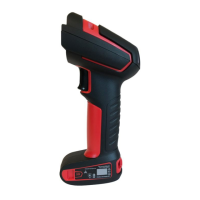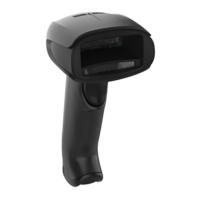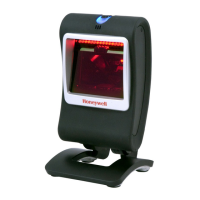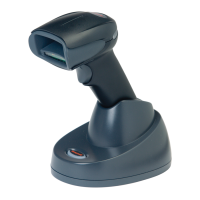104 Granit XP User Guide
Output Sequence Overview
Output Sequence Editor
This programming selection allows you to program the scanner to output data
(when scanning more than one symbol) in whatever order your application
requires, regardless of the order in which the barcodes are scanned. You can define
up to 15 barcodes in an output sequence.
Note: To make Output Sequence Editor selections, you’ll need to know the code I.D., code
length, and character match(es) your application requires. Use the alphanumeric
symbols from the Programming Chart, beginning on page 291. You must hold the
trigger while reading each barcode in the sequence.
To Add an Output Sequence
An output sequence is created using a string of serial commands that is sent to the
scanner. This string is most easily sent to the scanner using the EZConfig software
tool (see EZConfig for Scanning Introduction on page 227). You can also accom-
plish this by scanning alphanumeric barcodes (see the Programming Chart, begin-
ning on page 291).
1. If you are using barcodes to create your output sequence, scan Enter Output
Sequence on page 108.
2. Code I.D.
On the Symbology Charts on page 279, find the symbology to which you want
to apply the output sequence format. Make a note of the hex value for that
symbology. If you are using barcodes to create your output sequence, scan the
2 digit hex value from the Programming Chart, beginning on page 291.
3. Length
Specify what length (up to 9999 characters) of data output will be acceptable
for this symbology. Make a note of the length. If you are using barcodes to
create your output sequence, scan the 4 digit data length Programming Chart,
beginning on page 291. (Note: 50 characters is entered as 0050. 9999 is a
universal number, indicating all lengths.) When calculating the length, you
must count any programmed prefixes, suffixes, or formatted characters as part
of the length (unless using 9999).
4. Character Match Sequences
On the ASCII Conversion Chart (Code Page 1252), page 282, find the hex value
that represents the character(s) you want to match. Make a note of the hex
value for the character(s). If you are using barcodes to create your output
sequence, use the Programming Chart, beginning on page 291 to read the
alphanumeric combination that represents the ASCII characters. (99 is the
universal number, indicating all characters.)

